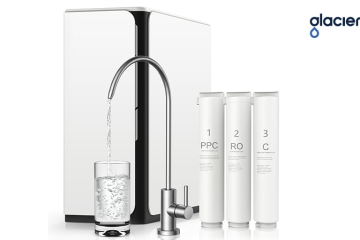Introduction
Maintaining a clean and well-functioning pool is essential for ensuring a safe and enjoyable swimming experience. Effective pool care and maintenance involve regular cleaning, chemical balancing, and equipment checks. This guide will explore the critical aspects of pool care, ensuring your pool remains in pristine condition all year round.
Key Aspects of Pool Care
1. Skimming and Vacuuming
Skimming: Daily skimming removes leaves, insects, and other debris from the surface. This prevents debris from sinking to the bottom and becoming more challenging to remove. Using a hand skimmer or a robotic pool skimmer can significantly reduce the time and effort required.
Vacuuming: Weekly vacuuming of the pool floor removes dirt and sediment that have settled. There are various vacuum options, including manual vacuums, automatic pool cleaners, and robotic pool cleaners. Regular vacuuming maintains water clarity and hygiene.
2. Chemical Balancing
pH Levels: Maintaining a pH level between 7.2 and 7.8 is crucial to prevent irritation and equipment damage. Low pH can cause skin and eye irritation, while high pH can lead to scaling and cloudy water. Regular testing and adjustments with pH increasers or decreasers ensure optimal levels.
Chlorine: Regular chlorination sanitizes the water and kills harmful microorganisms. Chlorine levels should be maintained between 1.0 and 3.0 parts per million (ppm). Chlorine tablets, liquid chlorine, or chlorine granules can be used to maintain these levels. Monitoring and adjusting chlorine levels prevent algae growth and bacterial contamination.
Alkalinity and Calcium Hardness: Balancing alkalinity (80-120 ppm) and calcium hardness (200-400 ppm) prevents water cloudiness and scaling. Alkalinity acts as a buffer for pH, stabilizing it and preventing rapid fluctuations. Proper calcium hardness levels protect pool surfaces and equipment from corrosion and scaling.
3. Filter Maintenance
Backwashing: Regular backwashing of sand and DE filters removes accumulated dirt, ensuring efficient filtration. Backwashing involves reversing the water flow through the filter to flush out trapped debris. This process should be done when the filter pressure gauge indicates an increase of 8-10 psi above normal operating pressure.
Cartridge Cleaning: Cleaning or replacing cartridge filters as needed ensures efficient filtration. Cartridge filters should be cleaned when the pressure gauge shows an increase of 8-10 psi. Cleaning involves removing the cartridge and hosing it down to remove debris. Depending on usage and water quality, cartridges may need to be replaced every 1-3 years.
4. Shock Treatment
Purpose: Periodic shocking breaks down organic contaminants and maintains water clarity. Shock treatment involves adding a high dose of chlorine or Alicacho Dichlor Chlorine Shock to the pool. This process oxidizes contaminants, kills bacteria and algae, and restores water clarity.
Frequency: Shocking should be done weekly or bi-weekly, depending on pool usage. After heavy rain, parties, or intense usage, an extra shock treatment may be necessary to maintain water quality.
5. Regular Inspections
Equipment Checks: Routine inspection of pumps, heaters, and other equipment helps identify and address issues early. Regular checks ensure that all components function correctly and efficiently. Look for signs of wear, leaks, or unusual noises, and address any issues promptly.
Leak Detection: Checking for leaks and ensuring proper water levels is crucial for maintaining pool integrity. Leaks can cause water loss, structural damage, and increased chemical consumption. Regularly inspect the pool shell, plumbing, and equipment for signs of leaks and repair them promptly.
Seasonal Pool Care Tips
Spring and Summer
- Increased Cleaning: Higher usage during warmer months requires more frequent cleaning. Skim, vacuum, and brush the pool regularly to maintain water clarity and hygiene.
- Chemical Adjustments: Higher temperatures and increased bather load can affect chemical levels. Monitor and adjust pH, chlorine, alkalinity, and calcium hardness more frequently.
Fall and Winter
- Thorough Cleaning: Prepare the pool for the off-season with thorough cleaning. Remove all debris, vacuum, and brush the pool to prevent staining and algae growth.
- Lower Water Levels: Lower water levels to prevent freezing damage to skimmers and plumbing. Drain water to below the skimmer level and blow out the plumbing lines to remove any remaining water.
- Covering the Pool: Use a pool cover to keep debris out and protect the pool from harsh weather. A good cover reduces maintenance, prevents water evaporation, and protects the pool surface.
Advanced Pool Care Techniques
Saltwater Systems: An alternative to traditional chlorine pools, saltwater systems use salt to generate chlorine through a salt chlorinator. This method provides a softer feel to the water and reduces the need for handling chlorine chemicals. While the initial setup cost may be higher, saltwater systems often result in lower maintenance costs and a more pleasant swimming experience.
UV and Ozone Systems: UV and ozone systems provide additional sanitization by using ultraviolet light or ozone gas to kill bacteria and viruses. These systems work alongside traditional chlorine or saltwater systems to enhance water quality and reduce chlorine usage. UV and ozone systems are effective in breaking down chloramines, which are responsible for the strong chlorine odor and irritation often associated with pools.
Automation and Smart Pool Technology: Advances in technology have made pool maintenance easier and more efficient through automation. Smart pool systems can monitor water chemistry, control filtration, and even perform cleaning tasks autonomously. Automated chemical feeders, robotic pool cleaners, and smart pumps reduce the time and effort required for pool care Central Texas, allowing pool owners to focus more on enjoying their pool rather than maintaining it.
Preventative Measures for Pool Maintenance
Algae Prevention: Preventing algae growth is a key aspect of maintaining a clean pool. Regularly brushing pool surfaces, maintaining proper chemical levels, and using algaecides can prevent algae from taking hold. Additionally, ensuring proper circulation and filtration helps keep algae at bay. It’s essential to address any algae blooms immediately to prevent them from spreading and becoming more challenging to eliminate.
Water Circulation: Ensuring proper water circulation is vital for effective pool maintenance. Poor circulation can lead to stagnant areas where debris and algae can accumulate. Running the pool pump for at least 8-12 hours daily, adjusting return jets to promote water movement, and regularly cleaning skimmer baskets and pump strainers can enhance circulation and water quality.
Pool Deck and Surroundings: Maintaining the area around the pool is just as important as maintaining the pool itself. Keeping the pool deck clean and free of debris reduces the amount of dirt and contaminants that can enter the pool. Regularly sweeping, hosing down, and sealing the deck can prevent dirt and algae buildup. Landscaping around the pool should be well-maintained to minimize leaves and other debris from falling into the pool.
Conclusion
Effective pool care and maintenance are crucial for a safe, healthy, and visually appealing swimming environment. By following a regular maintenance routine, pool owners can enjoy their pool while minimizing potential problems and costs. From skimming and vacuuming to chemical balancing and equipment checks, each aspect of pool care plays a vital role in ensuring the pool remains a source of enjoyment for years to come. Adopting these practices will not only enhance the pool’s longevity but also provide a consistently pleasant and safe swimming experience.



